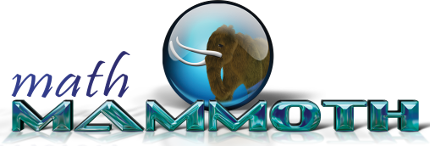Numerical patterns in the coordinate grid (5th grade math)
This is an introduction to graphing points in the coordinate grid that follow a simple numerical pattern. The patterns we look at all form a linear geometric pattern in the grid (the points look like on a line). The patterns in this lesson are either given algebraically (such as y = 12 − 2x), or we first continue the existing pattern in the given ordered pairs, and then write the rule in algebraic form (such as y = 2x or x + y = 10).
The lesson ties in with the common core standard 5.OA.3 and covers most of it, though not completely. The second video on this page then goes further, covering the rest.
In the second video lesson, we look at two numerical (linear) patterns created by adding or subtracting the same number (the rule), and their graphs in the coordinate grid. For example, if we add 1 to the x-coordinate and add 2 to the y-coordinate, and plot the points, the resulting graph looks like dots on a LINE — thus the name "linear" pattern. In algebraic terms, in this case, y = 2x, or every y-coordinate is double the x-coordinate.
If we subtract the same amount from the y-coordinate each time, (and add some same amount to the x), we get a descending line.
Then, I show some linear patterns of dots in the coordinate plane, and the task is to figure out the NUMERICAL patterns for the coordinates. It turns out, we can also visualize the rule for the patterns. For example, if the rule for x is "add 3" and the rule for y is "add 2", we can draw a staircase, just like when determining a slope of a line... the run is 3 units and the rise is 2 units.
This video connects with the Common Core Standard 5.OA.3, which has to do with two numerical patterns, given using two given rules, one for the x-values and the other for y-values.
See also
Bar models for addition and subtraction equations, plus addition and subtraction terms — video lesson
Math Mammoth Grade 5 curriculum
Receive my monthly collection of math tips & resources directly in your inbox — and get a FREE Math Mammoth book!
You can unsubscribe at any time.
